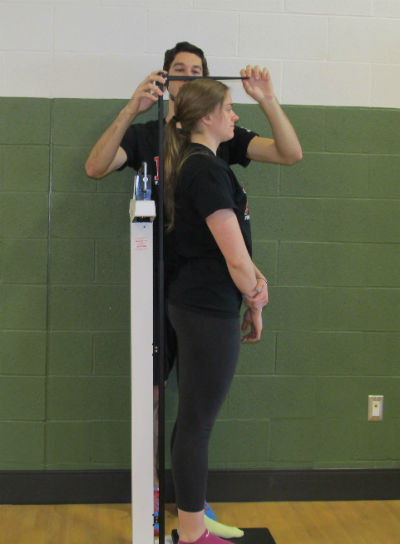This course focuses on learning how to safely increase load in various exercises targeting the basic human movement patterns. In particular, students will learn the: front squat, deadlift, bench press, shoulder press, chin-up, seated row and kettlebell swing.
Target population: Adults (18-65), healthy
- Course Instructor: Graeme Thomas
- Lab Instructors: Sarah King
- Lab Technician: Christian Caissie, Jasmine Collins, Avi Verma
- Semester: Two
Lab Sections:
- Section 1: Wednesday 12 – 2 PM
- Section 2: Tuesday 8 – 10 AM
- Section 3: Monday 12 – 2 PM
- Section 4: Thursday 4- 6 PM
- Section 5: Wednesday 8 – 10 AM
- Section 6: Friday 4 – 6 PM
View Lab Exam Feedback
No completed lab exam rubrics currently available
No completed lab exam rubrics currently available
No completed lab exam rubrics currently available
| Course: PHRE 1041 - Principles of Fitness | Movement Pattern: | Target: | Synergist(s): |
| Exercise |  |
| Regressions: | | Progressions: | |
| Key Teaching Points | Expectation: [if 456 equals="Supervised Practice"]Supervised Practice [/if 456][if 456 not_equal="Supervised Practice"]Independent Learning[/if 456] | [579] |
|
| Description: | Weight
- Zero the scales before the client steps onto them, making sure the scale is sitting on a flat surface.
- Ask the client to remove any ‘heavy’ items from their pockets (key’s, wallets etc) and remove any heavy items of clothing or apparel (big jackets, shoes, jewelry, etc)
- Ensure you note the clients state and time of day for testing to ensure any subsequent tests can be taken under identical conditions (check state of hydration, food consumed recently etc)
- When measuring weight – ask client to look straight ahead and stay still on the scales. Wait for the needle/digital screen to settle before recording the measurement. Record weight to the nearest 0.1 kg.
Height
- Remember to raise the anthropometer arm before starting the test.
- Ask your client to remove their shoes prior to taking the measurement.
- Instruct your client to stand as erect as possible, looking directly forward, with feet flat on the floor and heels together facing away from the wall or stadiometer.
- Immediately before taking the measurement, instruct the client to take a deep breath and hold until the measurement has been taken.
- Lower the measuring device until it rests gently on the top of your clients head and record the measurement (to the nearest 0.5 cm)
- If when the client stands on the stadiometer they are above your eye level, ensure you are standing on a box or small stool so that you can take the reading at eye-level.
Additional resource: BMI Table
|
| Common Error(s): | |
| Spotting: | |
>>
Return to My Course Home |

